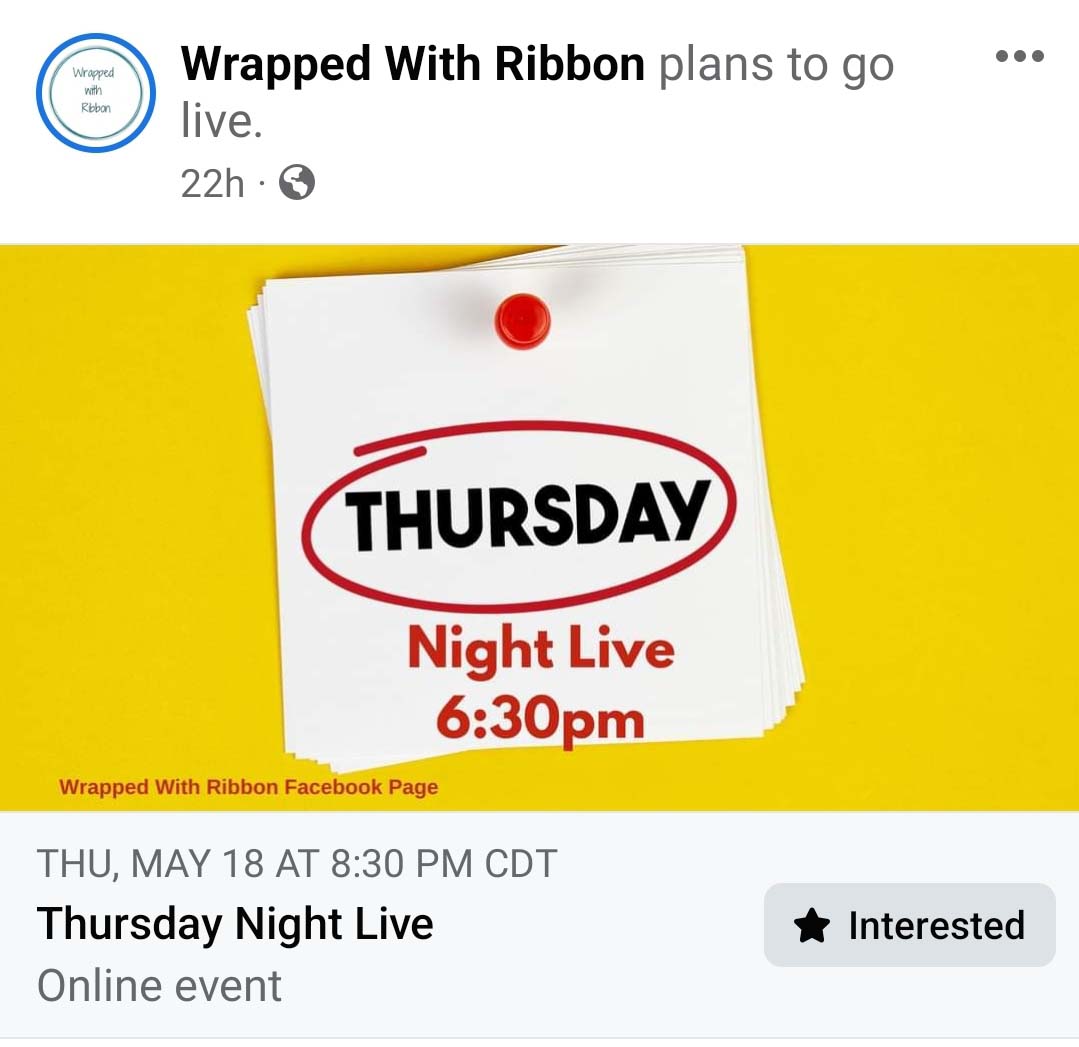Live Selling: Making Plans
As with any marketing tactic, hosting live sales online takes time and planning. Once you have settled on a format, and made any technology and lighting purchases needed, you will want to create an actionable plan for hosting your first several events.
1: Pick Your Host
First, who will your "host" of the event be? Depending on the format you select, this could be just one person talking to the camera, or you could make use of up to 3 or 4 participants, especially if you are modeling apparel items.
Cheryl Calvin, owner of The Store in Lake Highlands, hosts all of her live sales herself. She maintains conversation and eye contact with whichever of her employees is behind the camera that day.
Kathy from Periwinkle Marketplace is the consistent host of their live events, but she regularly brings others on camera. They have even offered for shoppers to participate in live events, in exchange for a discount on their next store visit!
"We are selling apparel, and I know the viewers at home don't all have my body type. I try to bring in guests who have a different body type than me, so the people watching can really get a feel for how a particular piece will fit their own body."
-Kathy from Periwinkle Marketplace
Worried about being too "camera shy" to host a live event? Don't be. "It's different than speaking in front of an audience - with the way we set up, I see myself on the iPad that is recording, and it's more like looking in a mirror and talking to myself," says Kathy from Periwinkle. Amy and Amy from Vintage Barn Chicks in Wisconsin say "Our viewers actually like it when we talk over each other, stumble over our words, or share something silly. They find it entertaining and will even comment that it makes us real and relatable."
2: Set a Schedule
Second, set a schedule. You may want to experiment with different times of day and days of the week as you go along, but every retailer we spoke with emphasized the importance of consistency. Remember that "it takes a while to build your following. These don't happen overnight," says Stephanie from Periwinkle Marketplace.
3: Marketing
That leads to the third step: marketing your live sales. Don't think you can just turn on the camera, hit record, and start reaching hundreds of people. Just like any in-person event you would host, you will need to advertise ahead of time. Utilize in-store signage, share on your social media channels, tell customers when they are making purchases in the days leading up to the event, and any other creative methods you can think of to spread the word.


4: Selecting Merchandise
Fourth, plan the merchandise assortment to feature in each episode. Select a theme, a seasonal assortment, or perhaps a variety of new merchandise. At Vintage Barn Chicks, which is a home décor store, they pick 20-25 items to fill a 45-60 minute live episode. For apparel stores, the number of items you can get through will depend on the number of models you have, but you will want to plan on showing an item for 30-60 seconds in order to talk through the details and give viewers the chance to see it from a few angles, without going too long and losing their interest.
5: Prep Time
Finally, on the day of the live event, allow prep time before the event. Gather all the needed items, number them if selling natively or barcode them if using a tool such as CommentSold, and prep yourself with item details that viewers might want to know. Materials, sizes available, care instructions, and other details can be helpful if customers ask questions via the comments section. And for clothing, don't forget to steam items to remove wrinkles if needed! Then, stage everything just off-camera for easy access in an orderly fashion throughout the event. The retailers we spoke with spend an average of 60-90 minutes prepping before each live event.
6: Go Live
When you go live, start the show and dive right in. Don't hang around and wait for people to join - your replay audience later will thank you. Keep up a steady stream of chatter, ask questions to your audience, and when they comment, mention them by name as you answer them. Do your best to engage with everyone who comments - it helps personalize the experience and create engagement. And if you finish a little sooner than planned, and you are in the store itself, don't be afraid to take an impromptu tour of the store. Vintage Barn Chicks employs this method regularly, and they finds that viewers love seeing different sections of the store.



7: Follow Up & Analyze
Once the event is over, you can begin the process of packaging items up for shipping or pickup in store. Also, create a return policy and don't be afraid to stick with it! However you handle order fulfillment, create a system - efficiency is key here, especially if you are tight on space.
When it is all said and done, don't forget to look at your analytics - native platform numbers in Facebook and Instagram are useful, especially for seeing how many viewers there are after the fact via replay. And tools like CommentSold come equipped with an analytics dashboard to help evaluate what worked and what didn't. You can also ask your viewers and social media followers for feedback - ask what they would like to see, if they have a preferred time slot, or anything else you are curious about. Ask during the live events themselves, to help drive comments and conversation - all of which will help drive up engagement for future events!
Discover more details about live selling, and additional insights from store owners, in the following articles:
Click Here to Request a Free CommentSold Demo
Live-Sale Retailer Examples
We've gathered a few examples of retailers who do live selling today, in a handful of formats. Check them out for a first-hand perspective on what the consumer experience is like. Be warned - you just might find them addicting!
Here are links to their social channels, where you'll find information on their scheduled events:
Going Live on Social: The Store in Lake Highlands
Live Selling Natively: Wrapped with Ribbon
CommentSold Retailers:

